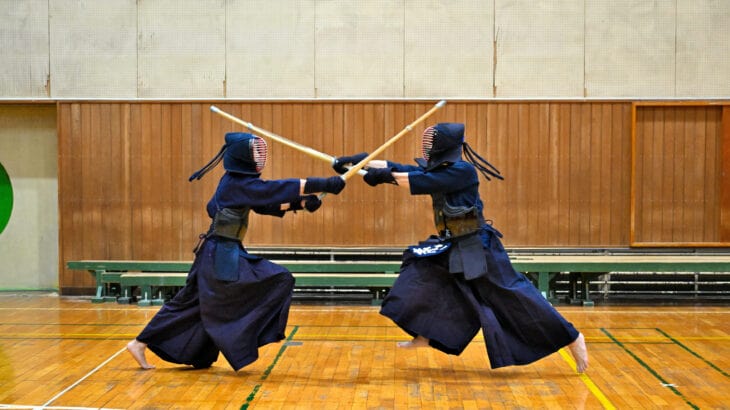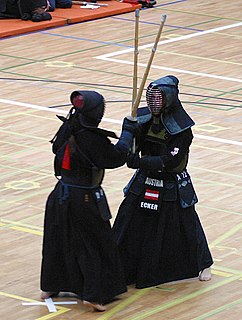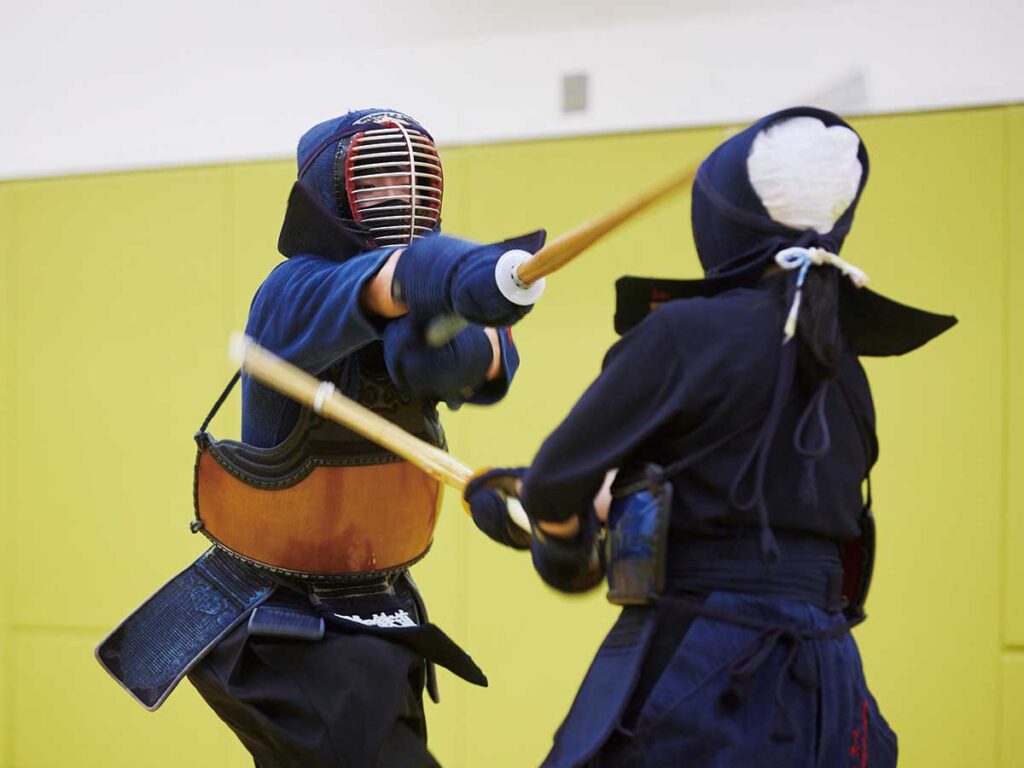
Kendo is more than just a sport. It is a traditional Japanese martial art that trains the mind and body and symbolizes samurai morality.
In this article, we will delve into the history, basic techniques, equipment, and spiritual aspects of Kendo, as well as its modern influence and future prospects.
This book provides all readers interested in the world of Kendo with its deep fascination and ways to hone not only their technique but also their spirit.
We hope this guide will help you learn, understand, and respect the beautiful art form of Kendo.
目次
- 1 What is Kendo – history and basic explanation
- 2 Kendo equipment – Necessary tools and their roles
- 3 Basic Kendo Techniques – Correct Posture and Striking Techniques
- 4 Kendo practice – effective practice method
- 5 Kendo match rules – Kendo as a competition
- 6 The spirit of Kendo – the value of spirituality and education
- 7 Influence and spread of Kendo on modern times
- 8 Kendo of the future – technological innovation and prospects
What is Kendo – history and basic explanation
Kendo is a traditional Japanese martial art whose techniques and spirituality have evolved throughout history.
Origin of Kendo
The origins of Kendo date back to ancient Japanese martial arts. In particular, the Japanese sword, which was developed during the Heian period, is considered to be the direct ancestor of Kendo.
The Japanese sword provided a tactical advantage due to its unique shape (a curved sword) and function. In the early days, swordsmanship developed for actual combat, and gradually came to have the aspect of “Katsuninken,” which emphasizes morality and spirituality.
This change prompted the transition from swordsmanship to kendo, and it was elevated to martial arts as a form of mental training during times of peace ( KENDO PARK, an online shopping mall specializing in sword tools ) ( Budo/Dojo Navi ) .
Historical development of Kendo
During the Edo period, Shinai (shinai) practice, which can be said to be the prototype of Kendo, was established.
This started with the use of protective gear as a safe training method. Nakanishi Chuzokotake of the Nakanishi-ha Itto-ryu school began using iron masks and bamboo armor, which would later lead to the development of sword tools.
Also, during this period, competitions between different schools were actively held, and the exchange of techniques and competition encouraged the development of Kendo.
In the Meiji period, swordsmanship was further systemized and formalized as kendo. It was also incorporated into police and military training, laying the foundation for modern competitive kendo ( KENDO PARK, an online shopping mall specializing in kendo tools ) .
The history of Kendo shows how it evolved from a simple martial art to one that emphasizes spirituality.
Even today, Kendo is respected around the world not only for its technical aspects but also as a cultural activity with educational value.

Kendo equipment – Necessary tools and their roles
Proper equipment is important in kendo, and shinai and armor are essential for practicing kendo safely and effectively.
Shinai and their types
Shinai is the main tool used in Kendo, and its design is detailed to ensure safety and functionality.
Shinai are mainly made of bamboo, and the tips are made soft for safety.
The size and weight of a shinai differ depending on the user’s age and rank, but are standardized based on regulations set by the All Japan Kendo Federation.
This ensures that the diameter and length of the bamboo swords meet certain standards ( KENDO PARK, an online shopping mall specializing in sword tools ) .
Components of armor
Kendo armor consists of four parts: men, torso, kote, and tare.
Each part is specially designed for the Kendo practitioner to protect himself from blows.
- Mask : Equipment to protect the head, the part that hits the face has a metal grid.
- Torso : Equipment to protect the torso, made of material with high impact resistance.
- Kote : This equipment is used to protect the wrist and fingertips, and the kote head of the right hand, which receives blows, is sometimes made large.
- Tare : Equipment to protect the waist and thighs, protecting the lower body from blows ( KENDO PARK, an online shopping mall specializing in sword tools ) .
These protective gears are designed to ensure safety during kendo practice and competitions, and to help kendo practitioners feel confident as they hone their skills.
Each part of the armor is durable and mobile, providing protection without interfering with Kendo movements.

Basic Kendo Techniques – Correct Posture and Striking Techniques
Correct posture and technical striking techniques are very important in Kendo for effective striking.
The importance of correct posture
In Kendo, it is said that posture is the basis of Kendo.
Correct posture enables stable movement, prevents unnecessary strain, and allows for quick and accurate strikes.
The basic posture of Kendo begins with keeping your back straight, your feet spaced shoulder-width apart, and your knees naturally bent.
This stabilizes your center of gravity and allows you to move quickly.
Also, from this posture, the three beats of “ki”, “sword”, and “body” will be more likely to match, and the technique will occur more smoothly.
Main striking techniques
There are several basic techniques in Kendo, but the following three are the most important:
- Men-uchi : A technique of hitting the opponent’s mask (head), and is one of the most basic techniques in Kendo. Proper men-uchi embodies both the spirit and technique of kendo.
- Kote Uchi : A technique that targets the opponent’s wrist, and is effective when counterattacking while blocking the opponent’s attack. Kote-uchi requires a sense of distance and timing, and accurate technique.
- Torso : A technique that aims at the opponent’s torso (abdomen). The torso attack is effective when closing the distance with your opponent, and allows you to quickly score points from an aggressive stance.
To master these techniques, it is essential to thoroughly practice the basic postures and movements, and understand the characteristics of each technique and when to apply them.
Kendo allows you to grow spiritually and improve your technique through these techniques.

Kendo practice – effective practice method
Kendo training is divided into basic training and applied technique training in order to acquire techniques and improve physical strength.
These practice methods are important for gradually improving your Kendo skills.
How to proceed with basic training
Basic training is essential to solidify the foundation of Kendo.
First, we will start by practicing correct posture and foot movement, and then move on to repeated practice of basic batting techniques.
Basic Kendo training includes the following elements:
- Practice swing : Learn basic swing techniques to perform Kendo movements smoothly. This includes equally developing power, speed, and control in swinging the sword.
- Basic strikes : Practice basic strikes against targets such as men, kote, and torso. This is done to increase the accuracy and effectiveness of strikes in actual combat.
- Footwork : Foot movements are very important in Kendo and are necessary to maintain the appropriate distance from the opponent. In basic training, you will practice moving forward, backward, and to the sides.
These exercises are the basis for improving technical accuracy and correctly executing Kendo kata.
Practicing applied skills
In addition to basic techniques, advanced techniques practice teaches tactical skills and how to respond to specific scenarios.
It includes exercises such as:
- Kakari practice : Practice offense and defense in a form similar to actual combat. This allows you to test your attack and defense timing, distance, and rhythm in real-life situations.
- Kumite : This is practice where you actually face your opponent and exchange blows freely. This exercise will develop your application skills and reaction speed for actual combat.
- Match format practice : Compete in a format that imitates an official match while observing rules and etiquette. This will help you get used to the mental and physical requirements of the competition.
Effective training methods contribute not only to Kendo technique, but also to spiritual growth.
By appropriately combining basic training and applied technique practice, it is possible to master the essence of Kendo.

Kendo match rules – Kendo as a competition
Kendo matches are competitions of technique and spirituality, and are conducted based on precise rules.
Basic rules of the match
A Kendo match usually consists of a one-pocket fight within a certain amount of time.
Matches are played one on one, and the playing field typically has a square or rectangular area of 9 to 11 meters.
Match time may vary depending on age and rank, and is usually a 5-minute three-game match, but the time may be shortened depending on the tournament.
The start and end of a match will be clearly indicated by a signal from the referee ( KENDO PARK, an online shopping mall specializing in sword tools ) ( kencoco ) .
Understanding the criteria
In a Kendo match, points are scored by what is considered an “effective strike.”
Effective striking is the act of forcefully and accurately driving the striking part (blade) of the shinai into the correct part of the armor (men, body, gauntlet, drape).
Also, when striking, the spirit is evaluated and it is necessary to be accompanied by a “cheering”. Furthermore, after striking, it is necessary to maintain a certain distance while maintaining pressure on the opponent (kokugamae).
The referee will judge strikes that meet these conditions as valid ( KENDO PARK, an online shopping mall specializing in sword tools ) ( kencoco ) .
In Kendo matches, foul play is strictly controlled. For example, intentionally delaying a match, inappropriately jostling, and intentionally leaving the field are considered fouls. These actions disrupt the flow of the match and may result in penalties being imposed by the referee.
Understanding and applying these rules ensures the fairness and smooth running of kendo matches and contributes to the philosophy of kendo, where athletes strive for not only technical but also spiritual maturity.

The spirit of Kendo – the value of spirituality and education
Kendo is not just a martial art, but also plays an important role as an educational tool that promotes spiritual improvement and personal growth.
Kendo philosophy
The philosophy of Kendo is based on the concept of “improving people through the way of the sword.”
This means seeking not only external technical mastery, but also internal self-refinement and moral maturity.
Kendo has the concept of “Kenzen Ichinyo” and has a deep connection with the teachings of Zen.
This spiritual pursuit aims to challenge one’s limits and develop courage and self-control in the face of adversity.
Also, since Kendo begins and ends with a bow, it teaches the importance of expressing respect and gratitude to others.
The role of Kendo in education
In the educational context, Kendo is employed as a means of developing responsibility, perseverance, and concentration in students and young people.
In schools and community education programs, Kendo serves as a platform for learning self-discipline and testing individual limits while collaborating with others.
Additionally, the physical exercise gained through Kendo promotes health and reduces stress.
Kendo training also provides a valuable opportunity to teach young people the importance of setting goals and working towards achieving them.
Kendo can have a positive impact on many aspects of life for its participants, not only through its technical mastery but also through the philosophy and educational value behind it.
In this way, Kendo exists as a cultural practice with value that is more than just a sport.

Influence and spread of Kendo on modern times
Even today, Kendo is widely popular both in Japan and abroad, serving as a bridge for multicultural exchange.
Popularizing Kendo both domestically and internationally
As Japan’s national sport, Kendo has long been deeply popular within Japan, but its appeal is also beginning to be recognized overseas.
Kendo is now practiced around the world, with organizations such as the All Japan Kendo Federation promoting international competitions and exchange programs.
. In particular, Kendo clubs have been established in Asia, North America, and Europe, and regular matches and demonstrations are held ( All Japan Kendo Federation AJKF ) ( Kendo information site LET’S KENDO ) .
Exchange between Kendo and other cultures
Kendo also plays an important role as part of cultural exchange.
International tournaments bring together kendo practitioners from many different countries and provide opportunities to foster friendships that transcend not only technical barriers but also cultural and linguistic barriers.
Through these events, participants deepen the spirit of mutual understanding and respect, and the spirituality of Kendo is shared across borders.
Kendo is also sometimes used in diplomatic situations, contributing to the promotion of international understanding and cooperation ( Kendo information site LET’S KENDO ) ( Kendo information site LET’S KENDO ) .
Kendo’s popularization and cultural exchange efforts demonstrate that this traditional martial art is becoming increasingly important as part of modern global culture.

Kendo of the future – technological innovation and prospects
Kendo is an innovative movement in terms of technological and educational advancements.
As a result, Kendo is evolving to become more accessible and accepted by a diverse group of people.
Introduction of new technology
The introduction of new technology in Kendo is primarily changing the way we train and how we view competition.
For example, the use of video analysis technology and wearable devices is increasing, which improves player performance and safety.
Furthermore, by using AI and machine learning, we are able to analyze athletes’ movements and techniques in detail and provide training programs tailored to individual needs.
These techniques have greatly contributed not only to the technical improvement of Kendo, but also to the educational approach ( Tetsudo.com ) .
Prospects for next-generation education
The role of Kendo in the field of education is expected to continue to expand in the future. Kendo education, especially for young people, goes beyond mere technical instruction and has become an important element in cultivating leadership, personal responsibility, and physical and mental health in students.
Kendo programs in schools and communities provide children with the mental and physical skills to meet the challenges they face on a daily basis.
There is also an emphasis on fostering a spirit of intercultural understanding and respect through international kendo workshops and exchange programs ( Cabinet Office homepage ) .
These advances show that Kendo is evolving beyond traditional boundaries and integrating with modern sports science and educational technology.
Kendo in the future will continue to expand its educational value and popularity, both technically and spiritually.



